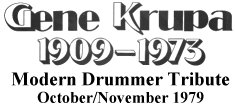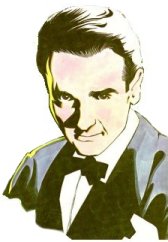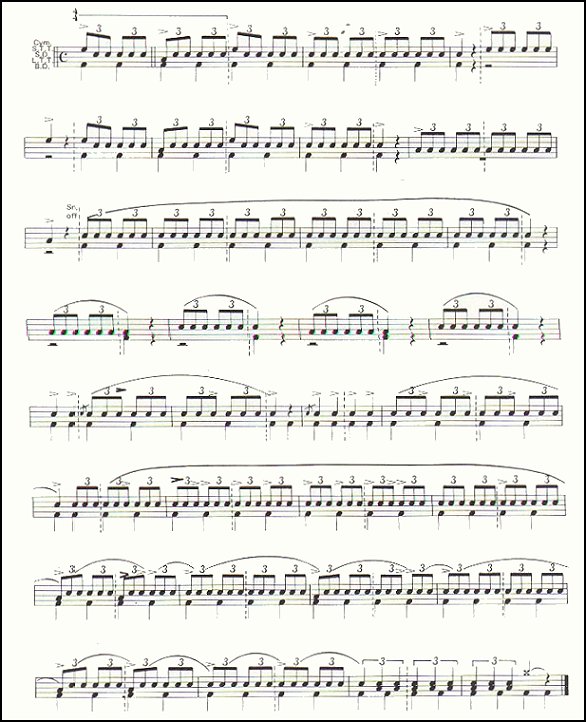 |

|
Krupa: A Musical Perspective
by Rupert Kettle
| The work of the
late Gene Krupa should be obligatory study for today’s
serious drum student and, indeed, may offer some
refresher lessons for a few old pros. For initial study
of Gene's drumming, I recommend the album, The Best of
Gene Krupa (Verve #V/V6-8594), as it presents a summary
of his music. Throughout the record, one is struck both by Krupa's sense of nuance and of phrasing. The subtle shades of tone obtainable by utilizing different areas of a drumhead, struck from various angles with different parts of a drumstick are all there, as they were long before Colgras and company thought to put them on paper. The phrases that twist and turn, beginning and/or ending at the least expected places are there too, and really warrant careful scrutiny. The latter aspect of swing drumming in general was what made it, to me, more rhythmically sophisticated than bop drumming. In bop, the measure, even the heat tends to split in more intricate ways, but phrasing reverts to very obvious fours, or even twos. |
| Some interesting
solo transcripts taken from the recording follow: SING. SING, SING: A modern remake of the 1930's Goodman hit finds Gene with an unidentified trio. Checking out the tone colors here, obtained with snare, bass and two tom-toms, the young listener may wish to trade in his Duo-dectaplus outfit and get back to taking lessons. Also, phrasing devices, which must be regarded as shifting meters to be best understood, abound. The second long drum solo is fascinating in that it begins on count "3" of its preceding measure, creating a feeling of downbeat that momentarily shifts the whole work. One almost feels that Gene has made a mistake, until he rounds it all off very neatly with an extension of the old "What Makes Your Big Head So Hard" cue. Note: the slur marks here indicate articulated press rolls; that is, a definite rhythm is played but each note is "pressed." or "buzzed," creating a more legato effect. |

